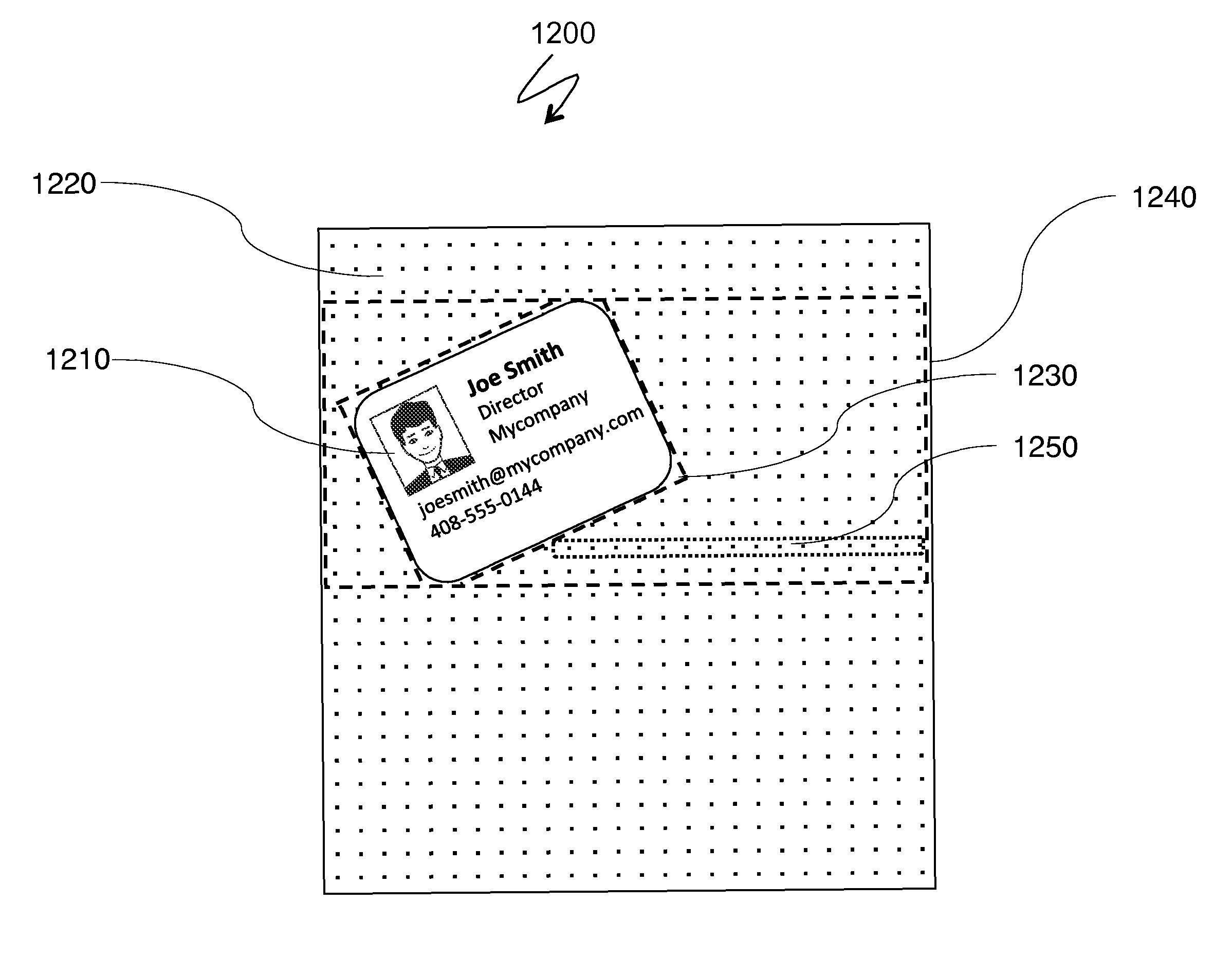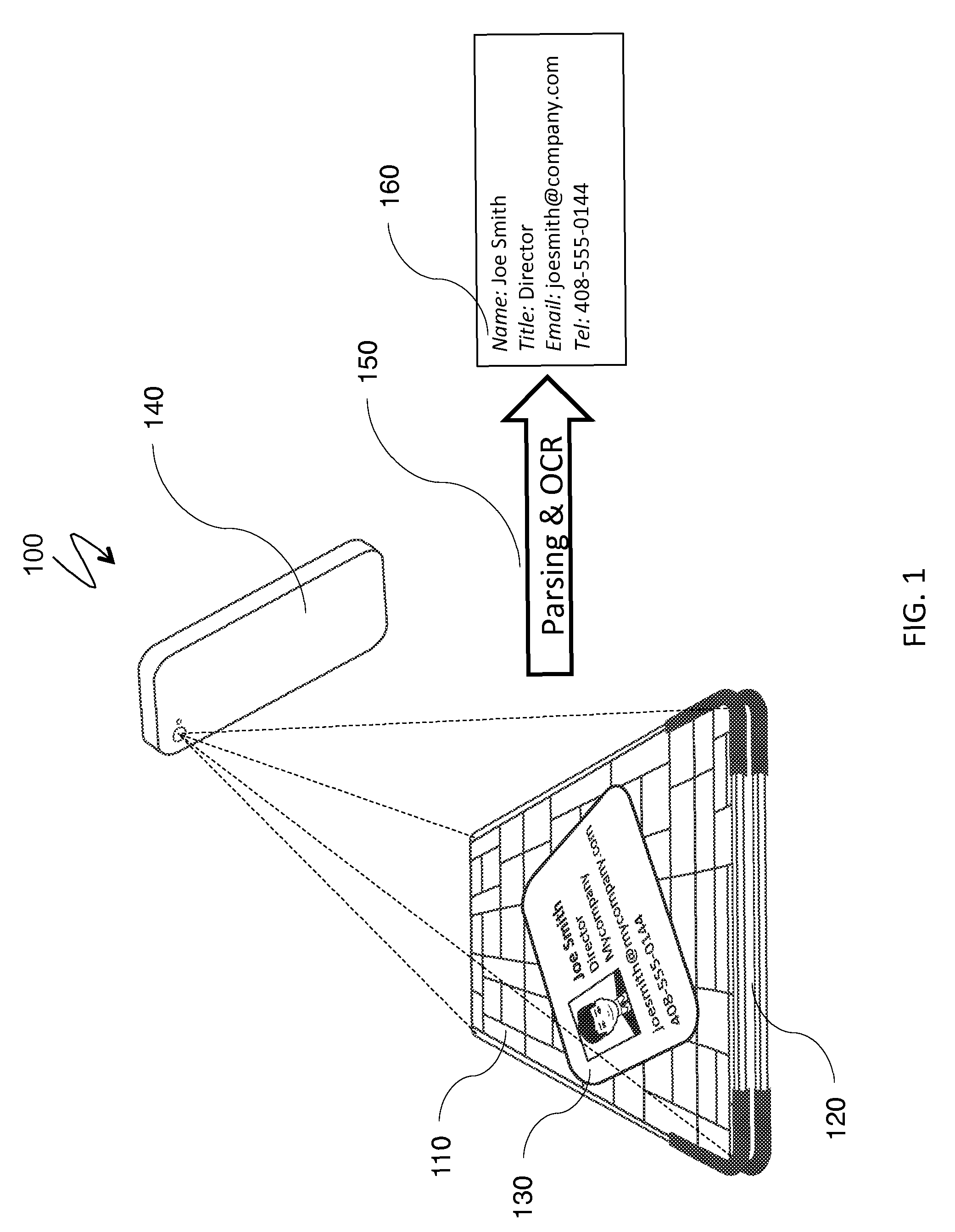Using surfaces with printed patterns for image and data processing
a surface and pattern technology, applied in the field of image processing and pattern recognition, can solve the problems of perspective distortion, background effects, and bending toward notebook edges, so as to facilitate the detection of item orientation and eliminate grid curvature and/or distortion
- Summary
- Abstract
- Description
- Claims
- Application Information
AI Technical Summary
Benefits of technology
Problems solved by technology
Method used
Image
Examples
Embodiment Construction
[0065]The system described herein provides a mechanism for creating, storing, producing, identifying and utilizing smart patterns, smart surfaces, smart fabrics, smart notebooks with simple pre-printed patterns, and smart stickers. The system provides different techniques for assigning tasks to smart patterns, processing photographs of objects with smart fabrics and performing activities associated with smart stickers.
[0066]FIG. 1 is a schematic illustration 100 of smart fabrics in conjunction with a business card holder and a task of processing photographs of business cards. A smart pattern 110, in this case a domino tiling on a monochromatic or a multicolor background, represents smart fabrics, or a smart surface of a business card holder 120. A business card 130 is placed on a surface of the business card holder 120. Note that the holder 120 and the business card 130 are not necessarily drawn to relative scale in FIG. 1. A user may want to obtain the contact info of the card owne...
PUM
 Login to View More
Login to View More Abstract
Description
Claims
Application Information
 Login to View More
Login to View More - R&D
- Intellectual Property
- Life Sciences
- Materials
- Tech Scout
- Unparalleled Data Quality
- Higher Quality Content
- 60% Fewer Hallucinations
Browse by: Latest US Patents, China's latest patents, Technical Efficacy Thesaurus, Application Domain, Technology Topic, Popular Technical Reports.
© 2025 PatSnap. All rights reserved.Legal|Privacy policy|Modern Slavery Act Transparency Statement|Sitemap|About US| Contact US: help@patsnap.com



